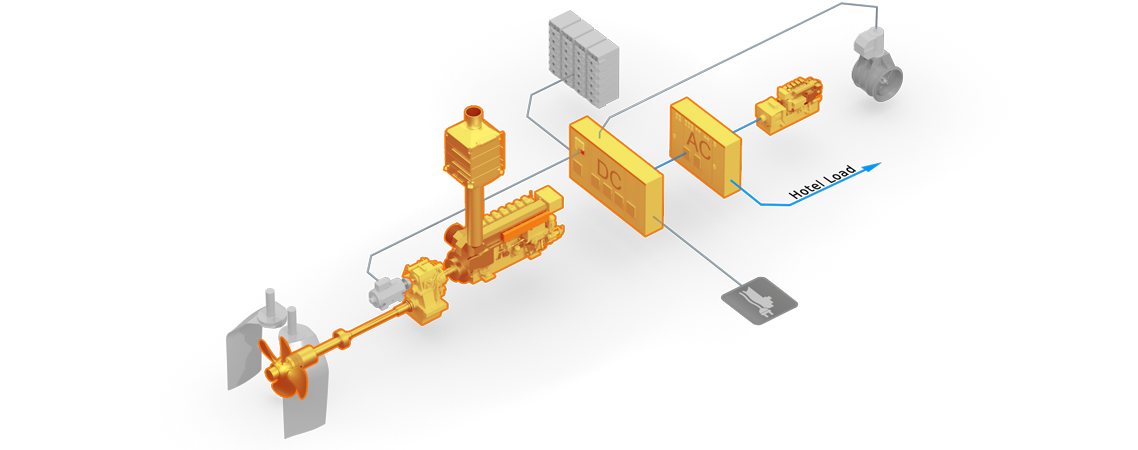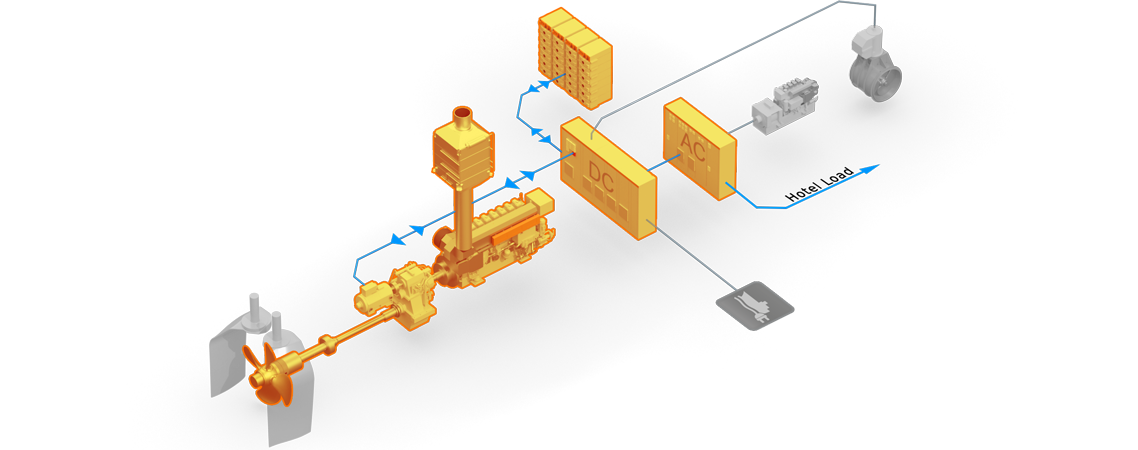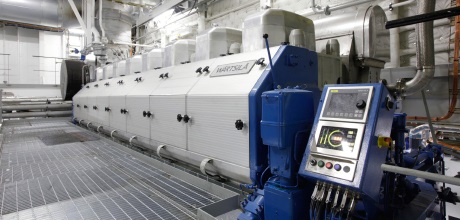

Diverse operations require flexible systems to maximise efficiency
Small and medium gas carriers generally transport liquid natural gas (LNG) or liquid petroleum gas (LPG), or other chemical products in gaseous form. Some vessel designs may be tailored for bunkering or ship-to-ship operations. Vessels in this size class need to be adaptable for varying voyage distances, loading conditions, and sailing speeds as well as varying power requirements for cargo handling and port entry and exit operations. Vessel CAPEX and OPEX are crucial to secure profitable and competitive business.
Gas carriers sail under variable cargo loads and with varying operational profiles, meaning propulsive and electrical power requirements can vary greatly. As a result, owners must balance the need to minimise a vessel’s Energy Efficiency Design Index (EEDI) with the need to ensure that installed propulsive power is sufficient to cope with adverse weather conditions as required by the IMO’s MARPOL Convention.
Vessels carrying hazardous or pollutant goods are usually required to have backup steering and navigational systems in case of failure. Small and medium gas carriers also often sail in challenging waters such as channels or fjords, making a reliable propulsion system, effective steering capability and excellent manoeuvrability a must. They may also be sailing in environmentally sensitive areas with strict emission and underwater noise limits. In addition, port operations may take place close to urban areas where even stricter local environmental regulations apply.
Integrated solution for small and medium gas carriers
Hover or click on the symbols to reveal more information on the six parts of the integrated solution.
Small gas carrier DF-DE
Small gas carrier DF-DM
Medium gas carrier
Small gas carrier DF-DE
Wärtsilä dual fuel-diesel electric (DF-DE) propulsion system
Emission reduction and operational flexibility are the main drivers behind the development of Wärtsilä propulsion systems for small and medium gas carriers. These highly adaptable, customised propulsion systems can be enhanced with a variety of advanced functionalities according to the intended operational profile of the vessel in question.
A great option for this vessel type is a diesel-electric hybrid propulsion system that includes fuel-flexible medium-speed gensets, a switchboard and a propulsion motor connected to steerable aft thrusters, a forward tunnel thruster and a battery-based energy storage system (ESS). An integrated Energy Management System (EMS) ensures all the elements work seamlessly together, optimising energy flows to achieve the best performance in all operational modes.
System operational modes for small gas carrier DF-DE
Small gas carrier DF-DE
Expand all
Small gas carrier DF-DM
Wärtsilä dual fuel-diesel mechanical (DF-DM) propulsion system
Emission reduction and operational flexibility are the main drivers behind the development of Wärtsilä propulsion systems for small and medium gas carriers. These highly adaptable, customised propulsion systems can be enhanced with a variety of advanced functionalities according to the intended operational profile of the vessel in question.
A great option for this vessel type is a hybrid propulsion system that includes a fuel-flexible medium-speed main engine, a geared propeller system, a shaft motor/generator (PTO/PTI) and a battery-based energy storage system (ESS) as well as an auxiliary genset. An integrated Energy Management System (EMS) ensures all the elements work seamlessly together, optimising energy flows to achieve the best performance in all operational modes.
System operational modes for small gas carrier DF-DM
Small gas carrier DF-DM
Expand all
Medium gas carrier
The Wärtsilä propulsion system for this vessel type has a main engine mechanically connected to a CPP through a one-step gearbox with PTO/PTI connection. This helps owners to balance the need to minimise a vessel’s Energy Efficiency Design Index (EEDI) and comply with the IMO’s MARPOL Convention while ensuring that installed propulsive power is sufficient to cope with adverse weather conditions. The Wärtsilä ProTouch Propulsion Control System offers a user-friendly interface and advanced features such as EcoControl. A GATE RUDDER™ can be added for superior efficiency and manoeuvrability and a bow thruster to further enhance manoeuvrability.
System operational modes for medium gas carrier
Medium gas carrier
Expand all



















